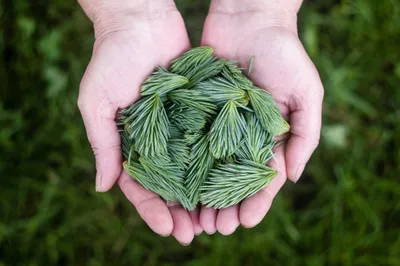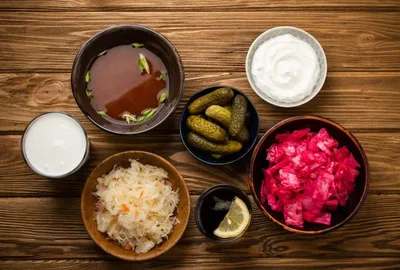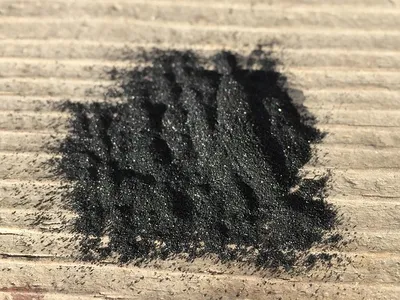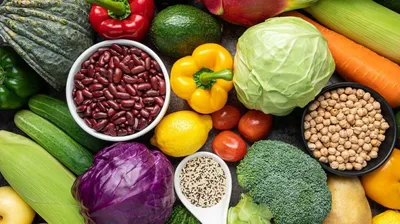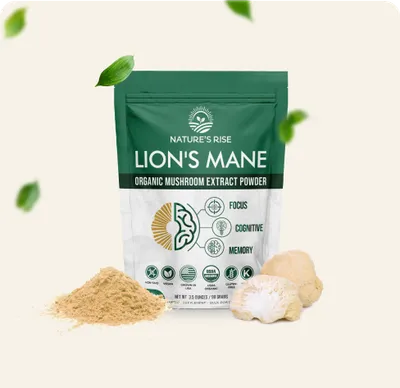Pine Needles Unleashed: Unlocking Culinary, Medicinal, and Ecological Treasures
Key Points
- Pine trees are evergreen all year long, providing year-round ecological benefits, beauty, and essential ecosystems for wildlife in wide-ranging climates.
- Identifying pine trees involves examining needle clusters, attachment methods, bark texture, and cone characteristics. Careful observation is key for accurate recognition and safety.
- Pine needles provide an incredible natural source of vitamin C and antioxidants. They have a strong cultural background in traditional use, which we’re just beginning to scratch the surface of with modern scientific inquiry.
- Safety is paramount—always double-check the species before use, as some trees, such as Yew and some pines, are poisonous. Conduct thorough research, consult trusted resources, and develop a plan that serves as a reference and checklist.
- Sustainable harvesting and careful preparation of pine needles ensure that the health of the trees is maintained. This helps keep the highest quality for culinary, medicinal, or craft purposes.
- Pine needles are incredibly flexible, making their way into cuisine, natural cleaning, and homemade projects across the globe. Reinventing uses to improve traditional applications can enhance the quality of life in all communities.
- 100% Wild Natural Premium Pine Needles, 7.0oz(200g), Cut & Sifted, No Gmo, Chemical Free
- Fragrant and Refreshing Pine Needle Herbal Tea, Hand Selected, Hand Crafted.
- Pine Needles Tea Help You Reduce Stress, Enhancing The Function Of The Digestive System.
- Enjoy a Cup of Pine Needle Tea, Brew Tea For 10 Minutes, Keep Your Health in Good Condition.
Last update on 2025-10-26 / Affiliate links / Images from Amazon Product Advertising API
Pine needles are long, thin leaves found on members of the family Pinaceae. They grow in clusters and are usually evergreen.
Pine needles serve essential functions to help pine trees retain moisture, resist cold temperatures, and deter insect pests.
Gardeners utilize them as mulch, craft-makers enjoy them, tea drinkers welcome them, and they’re a natural air-freshener when used indoors.
Its fragrance is crisp, green, and woody, which instantly creates a feeling of cleanliness in any area.
Pine needles are one of the slowest to decompose, making them a good choice in gardens for walking paths or ground cover.
Many people use them in herbal remedies, but it’s always wise to look into safety first.
To reap the full benefits of pine needles, it’s essential to understand where to find them. Please find out how to apply them properly here!
What Makes Pine Special?

Pine trees are memorable for their beauty throughout the year and the unchanging impression they make on the landscape. These trees are evergreen, so they retain their needles, leaving a green landscape even when other trees have lost their leaves.
This characteristic provides striking beauty in our forests and parks.
It makes them desirable to people, creating pine tree booms around the world. From urban parks in Berlin to expansive forests across Canada, there is no denying their beauty or majesty.
Evergreen All Year Round
Evergreen all year round. Because pine trees are evergreen, they do not lose their needles during the winter months.
This allows them to continue photosynthesis even when other trees stop, allowing them to produce food and store energy throughout the entire year.
The evergreen appearance is not just aesthetically pleasing.
This provides a consistent nesting habitat for wildlife, providing both homes and nutrition for birds and other small creatures year-round, including during the cold winter months.
For humans, the continued access to green views, whether in a city or a small rural community, is essential to health and well-being.
More Than Just Greenery
Pine needles are not just adding to the landscape’s beauty. Others appreciate them as herbal teas or as bitter yet medicinal herbs to fulfill vitamin C needs in times of need. Research demonstrates that pine needle extracts exhibit antioxidant properties.
Pine needles make excellent mulch in gardens as well—a single 18 kg bale will cover 9 square meters.
Historically, Native North Americans made teas from pine for medicinal purposes. Pines are an essential part of life as we know it around here.
A heavy accumulation of pine needles can prevent the growth of grass, which poses a problem for animals that graze.
A Nod to Pine’s Resilience
Pine trees are known to do well in bad soil and hard locations. Their roots run so deep that they tap into water and nutrients that other plants cannot reach. Pines are renowned for their toughness and are revered by many cultures as a symbol of resilience.
Other species of pines, such as white pines, reveal their identity with clumps of five needles.
Pines are essential tools for combating climate change because of their capacity to store carbon.
They even help us fight climate change because pine needles can be made into bio-oil!
How to ID Real Pine

Whether you hike, bike, paddle, or drive, the ability to easily identify a real pine is a skill worth having.
Pines are easily identified from other conifers by their needle, bark, and cone characteristics.
They are often mistaken for spruce or fir trees.
The good news is that with a bit of practice, you can tell them apart by finding just a few identifying clues.
- Pine needles are never one by one, but instead grow in bundles (fascicles) of 2–5.
- The fascicle sheath at the base of the bundle persists.
- Pine needles are slender and elongated, often with a green, blue, or white cast.
- Bark is thin, scaly, or split, gray to reddish-brown.
- Pine cones can be tiny and egg-shaped or large and woody.
- Pines often have a “piney” scent, but not always.
1. Count Needles in Clusters
Count Needles in Clusters. Pine needles never grow singly. Notice how many needles are in each cluster. Nearly all others have 2–5 needles per fascicle.
As an example, eastern white pine has 5 needles per cluster, while red pine has 2. A quick reference chart helps identify differences between species.
2. See How Needles Attach
Real pine. This is a hint—real pine needles attach to the branch in a cluster with a definite sheath at the base.
Spruce and fir needles are arranged singly. It’s worth getting some good shots of the attachment for reference later on.
3. Observe Needle Characteristics
Pine needles are typically soft, long, and bendy. Some needles you might touch will feel smooth, while others will feel sharp.
Specific colors can vary significantly, ranging from very dark green to very blue. Develop a data sheet that can be used to catalog your observations for each tree.
4. Examine Bark and Shape
Examine bark and shape—pines are identified by scaly or grooved bark, and can be a variety of colors from white to yellow to red.
The tree’s appearance plays a role as well—the majority have tall, straight trunks and a pyramidal or conical crown with upright branches. Make a sketch or take a close-up photo of the bark.
5. Study the Pine Cones
Pine cones have a wide range of sizes and shapes. Some are palm-sized and spiky, but others are tiny and sleek.
Once mature, cones open up to expose their seeds. A quick reference chart of cone characteristics by species will make it easy to puzzle them out.
- Hand selected for the finest quality
- Lengths range from 10-16 inches
- 8oz Bundle
- Immune system improving Antioxidants
- Easily make Pineneedle Tea!
Last update on 2025-10-26 / Affiliate links / Images from Amazon Product Advertising API
Pine’s Health Power Unveiled

Pine needles have been making quite a splash lately in the health and scientific communities. Their story spans the history of humanity, from traditional uses to modern research.
People around the world have learned how to incorporate these vibrant, emerald-hued leaves into cuisine and health.
Continue to learn how pine needles have both nourished and mended.
Finally, modern science is catching up with what so many people have known for centuries!
Nature’s Vitamin C Boost
Nature’s Vitamin C Boost Pine needles pack a serious punch when it comes to vitamin C.
They can have up to 4 times as much as oranges by weight! This quality makes them an excellent choice for anyone seeking natural immune support.
Vitamin C keeps your immune system in fighting form, prevents colds, and heals wounds.
Adding pine needles to your routine can be simple:
- To make an infusion, steep one teaspoon of fresh or dried pine needles in hot water.
- Sprinkle finely chopped needles on salads.
- Infuse honey or vinegar with pine needles for a special treat!
Rich in Protective Antioxidants
Pine needles are rich in antioxidants, including flavonoids and polyphenols. Together, these protective compounds slow cellular damage and reduce the risk of disease.
Some research, including studies from Japan, has shown that pine needle tea can inhibit the growth of cancer cells in test tubes.
Pine needle tea is a delicious and straightforward method to absorb these antioxidants, and it’s enjoyed with a refreshingly citrusy, woodsy flavor.
Historic Use as Medicine
Native peoples of North America and healers in Asia have long gathered these leaves for both food and medicinal purposes.
The Iroquois traditionally burned them to scare away bad dreams. Our ancestors, including sailors, drank tea made from pine needles to prevent scurvy.
Pine’s historic use as medicine A timeline of the use of pine in medicine would quickly illustrate its long role in healing the human body—and spirit.
Modern Science Backs Benefits
Modern science backs the benefits. Recent studies have bolstered some of these long-touted claims.
Research studies emphasize pine’s powerful anti-inflammatory and immune-boosting effects.
Herbalists today frequently use pine for natural wellness, from pine essential oils to pine gum and resin salves. If you experiment with pine, be sure to use a non-toxic species, such as pine, rather than a toxic species like yew or Norfolk pine.
Crucial Pine Safety Notes

Whether you’re harvesting pine needles for culinary uses, medicinal remedies, or crafting, safety should always be your top priority. Not all pine trees are hazardous.
Other species, such as Yew, Ponderosa Pine, and Norfolk Island Pine, are toxic. Some can even lead to nasty stomach aches if consumed in excess.
Some pine needles even contain PFAS, forever chemicals, which can persist in soil and water for decades.
Keeping an eye on children when they are near pines and ensuring play areas are away from them are easy yet prudent measures.
The Important Yew Warning
Yew trees, like pines, can seem innocuous at first. Yew needles are much softer, and they tend to lie flatter along the branch. Most pines have thick, rough, scaly bark, but not so with these natives, whose bark is smooth and reddish-brown.
Be on the lookout for red berries! As such, they are a tip-off—and they are super poisonous.
Consuming even a small amount of a Yew plant, even unintentionally, can be fatal.
To prevent any confusion, have a list of safe and unsafe trees easily accessible when foraging or teaching others how to forage.
Spotting Other Toxic Pines
Other species—but not just Yew, such as Ponderosa or Norfolk Island Pine—can be poisonous.
Ponderosa needles are long and found in clusters of three. Norfolk Island Pine has much softer, flatter needles with a very pronounced fresh scent.
If you’re ever in doubt, take notes or a quick photo to reference later. This creates your personally curated safe-foraging guide over time.
General Use Precautions
Only harvest from trees you are 100 percent confident were raised safely. Consult a local expert or refer to a proven resource.
If collecting needles to make tea or other remedies, research the species before use.
Here are some simple dos and don’ts:
- Do: Wash needles, use small amounts, and check for allergies.
- Don’t: Eat unknown species, use with kids unsupervised, or rely on folk wisdom alone.
Harvest and Prep Pine
Pine needles, remarkably fresh eastern white pine needles, are a wild forager’s best friend.
They create tremendous value for those who would like to experiment with pine needle mulch in their hometowns.
Harvesting and preparing them properly is crucial to maintaining healthy forests and maximizing your harvest.
Here’s what you need to know to get it right.
- 24 x 18 x 12 inch size box. Covers approximately 80-100 cubic feet per box. At this time, we are unable to deliver to WA, MT, OR, CA, ID, NV, MN, ME, MA, or PO Boxes. Sorry for any inconvience this may cause.
- Weed Control: Easily maintain a weed-free garden without the need for chemicals. Pine straw mulch naturally inhibits weed growth.
- Soil Moisture Retention: Enhance plant health and reduce watering needs with our pine straw mulch’s excellent moisture retention properties.
- 100% Organic Material: Our pine straw mulch is sourced from sustainable pine forests, providing an eco-friendly and natural garden solution.
- Simple Application: Effortlessly spread this organic mulch around flower beds, trees, and garden pathways to create a pristine landscape.
Last update on 2025-10-26 / Affiliate links / Images from Amazon Product Advertising API
Gather Needles Responsibly
- Gather Needles Responsibly. Locate mature pine trees, such as longleaf (8–18 inches long, in threes) or loblolly (5–9 inches, in threes or fours).
- Gather Needles Responsibly. Only gather freshly fallen or still-attached green needles. These hold all the flavor and goodness!
- Gather Needles Responsibly Use clean, sharp shears to cut small bundles. Don’t strip branches clean—always leave more than you take so the tree can remain healthy.
- Sustainably gather needles. Taking too many needles can injure the tree and alter the soil microbiome. Raking pine straw every year damages the topsoil, leading to increased erosion and runoff.
- Always check your local guidelines for gathering pine needles, particularly on public lands. This varies from place to place, but most areas permit small harvests for personal use, so long as you consult in advance.
Dry Pine Needles Right
- Dry Pine Needles Right. Spread the needles in a single layer on a mesh drying screen or tray. Keep them out of direct sunlight and provide good air circulation.
- Allow them to dry for a minimum of 7–10 days or until they feel crunchy.
- Drying quickly preserves flavor and all those good oils. When harvested, damp needles may mold or degrade in quality.
- If you want to make larger batches, you can bundle and tie needles, then hang them upside down in a dry, well-ventilated location.
Prepare for Safe Use
- We recommend rinsing needles under cold water to remove dirt. Pat dry.
- If using for tea or infused oils, slice with clean scissors into smaller pieces.
- You can steep chopped, dry needles in hot water to make tea, or infuse them in oil for use on your skin.
- Experiment with pine needles in broths, syrups, or use them in homemade cleaners.
Pine’s Role in Forests
Pine trees prevent soil erosion and encourage water retention. Their needles create a thick ground cover, providing shelter for mammals, birds, herps, and invertebrates, and anchoring the land with fibrous roots.
There are ecological limits to baling and raking pine straw—over-harvesting can destabilize the soil, so again, moderation is key.
Unlock Pine Needle Uses
Pine needles provide a wealth of other services beyond carpeting the forest floor. These narrow needles provide an endless resourceful kit for everyday life, a connection between the past and the future.
Pine needles are used by people around the world for their health benefits, crafting, and home care uses.
Before diving into each hands-on project, here’s a quick look at common uses:
- Brew pine needle tea, rich in Vitamin C
- Use needles as natural garden mulch (note: keep away from house walls to cut fire risk)
- Craft baskets, trays, and vases from pine straw
- Make gentle bedding or insulation material
- Mix pine needle oil for cleaning or wellness
- Add needles for fresh scent in DIY décor
Brew Comforting Pine Tea
Prepare your pine tea ingredients. Locate some fresh pine needles, rinse to remove debris, and chop into small pieces.
Add 250 ml hot (not boiling) water over each tablespoon of needles.
Allow to steep for 10 minutes, then strain. Vitamin C – This tea, traditionally used in Chinese medicine, is loaded with vitamin C and can help clear up those pesky clogged sinuses.
Some young spring needles may be quite sour—experiment with adding lemon, honey, or ginger for a smoother flavor.
Write out your mix on an index card for future reference.
Create Infused Pine Oil
Pack a wide-mouth jar with clean, dry pine needles and submerge in a light oil (such as olive). Seal and let sit for two weeks, shaking occasionally.
Using a coffee filter or cheesecloth, strain the liquid and bottle it.
Pine oil is excellent for body care, massage, aromatherapy, and cleaning. Keep track of what you do so you can recreate your process or adjust the formula.
Discover Pine Resin’s Magic
Pine resin, directly harvested from trees, can be made into healing salves, natural glue, or used in crafts. Warm the resin to make it more pliable, then strain to remove impurities.
Perfect for creating healing balms or incorporating into creative art projects. A tip: maintain a continuous list of ideas for potential resin crafts!
Mix a Pine Health Elixir
Combine steeped pine needles with spearmint, lemon juice, and honey to taste for a refreshing herbal tonic. Many herbalists believe that this combination acts as an immune system enhancer.
Experiment with different herbs and exchange ideas with your friends to discover exciting new flavors.
Exploring Pine Essential Oil
As a natural air freshener, pine essential oil cleanses and purifies the air while helping to reduce stress. Add to a diffuser, or dilute with a carrier oil and use for massage.
Make sure to read the label, and have a guide to differentiate between safe use and harmful use.
Our Conclusion
Pine needles are hidden gems. Pine needles are like nature’s teeny-tiny powerhouses. Pine delivers flavor and function straight from the woods.
Get a taste of something fresh in your tea and reap the enormous benefits of vitamin C.
Being able to identify true pine is a big bonus. No more wondering—identify by searching for long, soft needles in bundles and a strong, woody smell.
People have utilized pine for its health benefits, beauty, craftsmanship, and even for cleaning purposes for centuries.
The safe use of foraged plants begins with selecting the right species and preparing it properly.
Consider brewing a tea or putting needles in a steam bath. These incremental changes have far-reaching consequences, providing new roles for public infrastructure in your everyday life.
Have a question or something to say about pine tips? Share your ideas in the comments and get in the conversation.
- Premium Quality Pine Needle Essential Oil: SVA Pine Needle Oil 4oz is obtained by steam distillation of Pinus Sylvestris needles. Our Pine Needle oil is free of preservatives and comes with a dropper for easy application. It is not tested on Animals. We care for you
- Faint and Delicate Aroma of Pine Needle Oil: SVA Pine Needle Essential oil has a mild and clean aroma that creates a warm ambience when used in diffusers, deodorizers, and sprays
- Diffuser & Aromatherapy: SVA Pine Needle Oil has a faint aroma, which makes the surroundings lively and warm. You can add the oil to a deodorizer for a delightful aroma. Using Pine Needle essential oil for diffuser is a popular aromatherapy choice all across the world
- Skin Nourishment: SVA Pine Needle Oil is suitable for application on the skin. It should always be diluted with suitable carrier oil before use since it is highly concentrated. There are many ways to use Pine Needle essential oil for the skin. Add a few drops of the oil to your creams, lotions, or bath products to enjoy the goodness of Pine Needle oil for your skin
- Hair Care: SVA Pine Needle Oil is widely used for hair and scalp massage. Always dilute with suitable carrier oil before use since it is highly concentrated. For your hair care routine, simply mix a few drops of Pine Needle oil for your hair with your shampoo, conditioner, and mask and use it regularly. You can use it a few times weekly for a scalp massage after proper dilution with carrier oil
Last update on 2025-10-25 / Affiliate links / Images from Amazon Product Advertising API
Frequently Asked Questions
What are pine needles?
Pine needles, the long, thin leaves of evergreen trees, grow in clusters and are known for their fresh, resinous smell, making them an essential organic material throughout the year.
How can I tell if a tree is a true pine?
True pines, such as the eastern white pine, are distinguished from other conifers by their unique needles, which occur in bundles of 2, 3, or 5, known as fascicles. Their cones and bark are also distinct, helping to identify important tree species.
Are pine needles safe to use?
Although not all parts of the Eastern White Pine should be used medicinally, most fresh needles are safe for general use. A few species, exceptionally particular pine species, can be toxic, especially to pregnant individuals and pets. Always positively identify the tree in question and seek guidance from an expert if there are any doubts.
What health benefits do pine needles offer?
Pine needles, particularly from the eastern white pine, contain a plethora of vitamin C and antioxidants. These lovely pine needles can help immune function, decrease inflammation, and fill the air with an uplifting pine scent.
How do I harvest pine needles safely?
With sterilized scissors, snip fresh eastern white pine needles from healthy branches. Steer clear of trees located by roadways or industrial sites. Take only what you’ll use, and do so in a way that protects the tree and the surrounding ecosystem.
What are common uses for pine needles?
Pine needles, especially from the eastern white pine, can be brewed into delicious and nutritious tea, incorporated into crafts, or utilized as organic material in natural cleaning products and gardening mulch.
Can I eat pine needles?
Most edible varieties of fresh eastern white pine needles are safe to eat when brewed in hot water for use as a fragrant tea or flavoring. Don’t eat too much, and don’t consume needles from unknown or toxic pine species.

